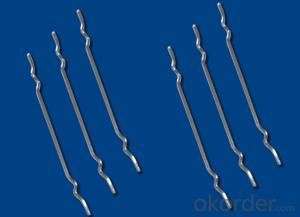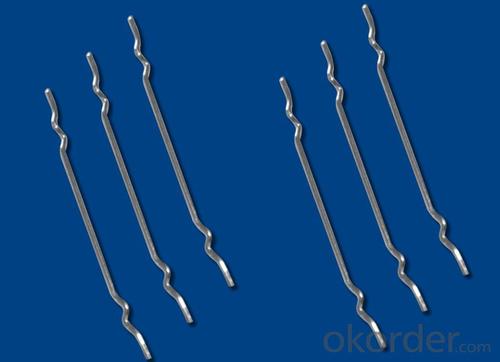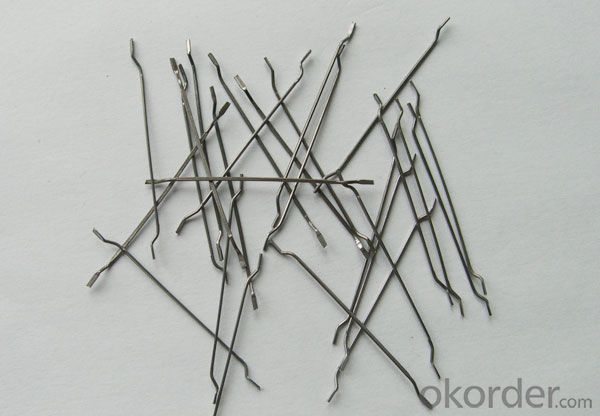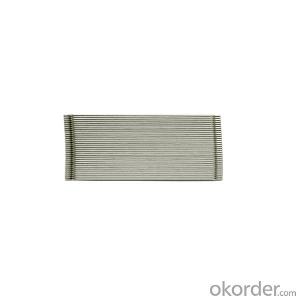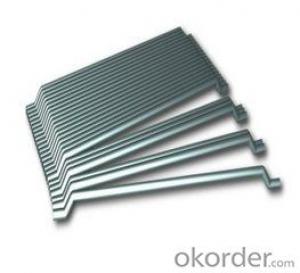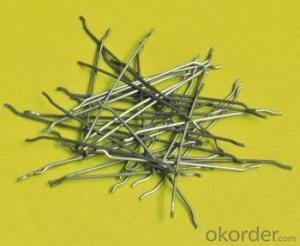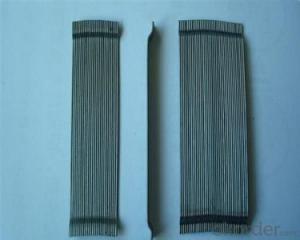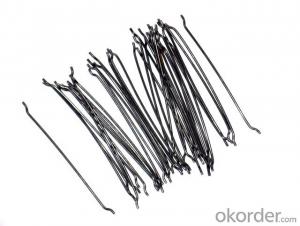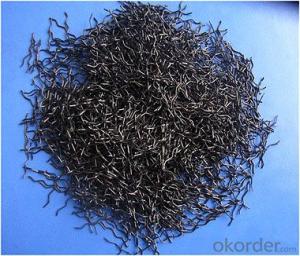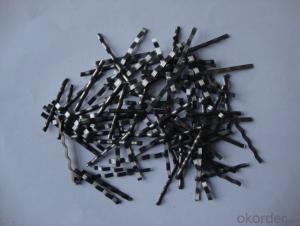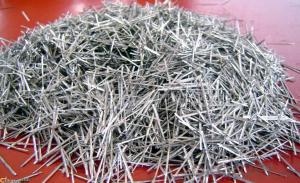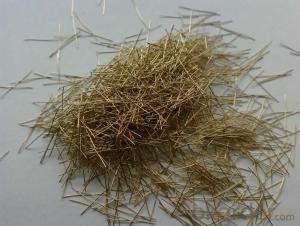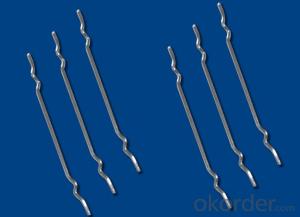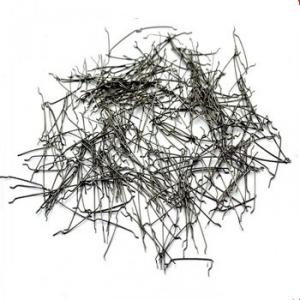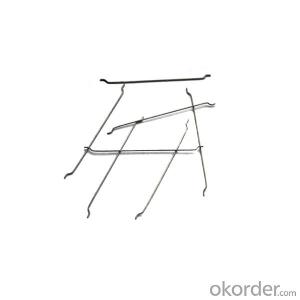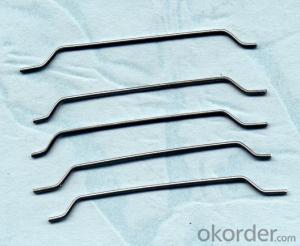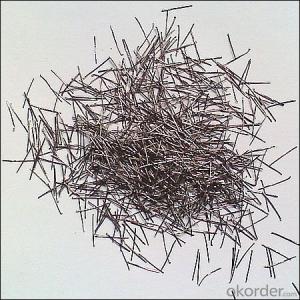Melt Extract Stainless Steel Fiber Loose Glued for Concrete Reinforcement
- Loading Port:
- Tianjin
- Payment Terms:
- TT OR LC
- Min Order Qty:
- 5 kg
- Supply Capability:
- 30000 kg/month
OKorder Service Pledge
OKorder Financial Service
You Might Also Like
Quick Details
Place of Origin: Jiangsu, China (Mainland)
Model Number: HT-MC
Material: Color Steel
certificated: ISO 9001
Specifications
ISO 9001 certificated
2.70% for Europe, Middle Asia, America market
3.Have the most number of steel fiber machine in china
1. Material: low carbon steel wire or stainless steel
2.Diameter: 0.4mm-1.0mm
3.Length: meet your requirements
4.tensile strength >1000Mpa
6.Feature: excellent tensile,high tenacity,against cracking,impact and fatigue
7.Uses: highway road surface,tunnel,building,airport road surface and so on .
Straight Steel Fiber
Low carbon steel fiber for building construction
GLUED steel fiber:
1.Diameter:0.4mm-1.2mm
2.Length: 25mm-60mm
3.Material: low carbon steel wire
4.Feature: 1100Mpa , excellent tensile,high tenacity,against cracking,impact and fatigue
5.Uses: highway road surface,tunnel,building,airport road surface and so on .
Picture
Steel fiber
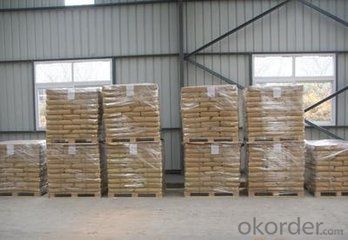
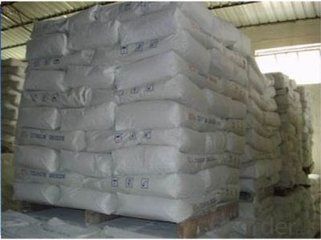
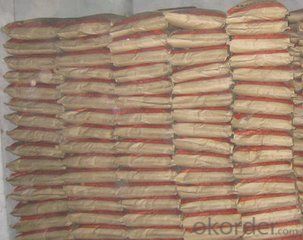
FAQ
certificated: ISO 9001
Technical advantages of Daye steel fiber:
A. Improve mechanical performance of concrete
B. Provide uniform distribution throughout concrete with excellent mixing
C. No balling or caking by adopt correct mixing method
D. Reduce concrete volume
E.Save construction time and cost
F.Reduce excavation volume
G.Available for jointless floor.
- Q: Can melt extract stainless steel fiber enhance the resistance of concrete to chemical attack?
- Yes, melt extract stainless steel fiber can enhance the resistance of concrete to chemical attack. The addition of stainless steel fibers improves the durability and performance of concrete by reducing the impact of chemical substances that could potentially degrade the concrete. Stainless steel fibers provide additional strength, increase the concrete's resistance to cracking, and enhance its overall lifespan in harsh chemical environments.
- Q: How does melt extract stainless steel fiber improve the resistance of concrete to chloride ingress?
- Melt extract stainless steel fiber improves the resistance of concrete to chloride ingress by providing a physical barrier against chloride ions that can cause corrosion in the concrete. The stainless steel fibers create a dense network within the concrete, reducing the permeability and limiting the movement of chloride ions. This enhances the durability and longevity of the concrete structure by minimizing the risk of corrosion and subsequent deterioration.
- Q: Does melt extract stainless steel fiber improve the durability of concrete in marine environments?
- Yes, melt extract stainless steel fiber contributes to enhancing the durability of concrete in marine environments. Its corrosion-resistant properties help mitigate the detrimental effects of saltwater exposure, reducing damage and extending the lifespan of the concrete structure.
- Q: What is the effect of melt extract stainless steel fiber on the fatigue behavior of concrete beams?
- The effect of melt extract stainless steel fiber on the fatigue behavior of concrete beams is generally positive. Stainless steel fibers are known for their high tensile strength and resistance to corrosion, which can enhance the durability and performance of concrete structures under cyclic loading conditions. When stainless steel fibers are added to concrete beams, they act as reinforcement and help to distribute the stress more evenly throughout the structure. This reinforcement can significantly improve the fatigue resistance of the beams, allowing them to withstand repeated loading and unloading cycles without experiencing significant damage or failure. The presence of stainless steel fibers in concrete beams can also help to reduce crack propagation and control the growth of microcracks. This is due to the fiber's ability to bridge across cracks and prevent them from widening or propagating further, thereby increasing the overall fatigue life of the beams. Furthermore, the addition of melt extract stainless steel fibers can enhance the ductility of concrete, making it more resistant to cracking and providing better energy absorption capabilities. This improved ductility can contribute to the overall fatigue performance of the beams by allowing them to deform and absorb energy more effectively, minimizing the risk of sudden failure. In summary, the incorporation of melt extract stainless steel fibers in concrete beams has a positive effect on their fatigue behavior. It improves their fatigue resistance, reduces crack propagation, enhances ductility, and ultimately increases their overall durability and lifespan under cyclic loading conditions.
- Q: How does melt extract stainless steel fiber improve the toughness of high-performance concrete?
- The toughness of high-performance concrete is improved by melt extract stainless steel fiber through various mechanisms. Firstly, the crack resistance of the concrete is enhanced by the addition of stainless steel fibers. These fibers act as reinforcement when the concrete is under stress or loading, preventing cracks from spreading. As a result, the material becomes more durable and resilient, capable of withstanding higher levels of stress without significant damage. Secondly, the post-crack behavior of the concrete is also improved by the stainless steel fibers. Once cracks begin to form, the fibers evenly distribute the stress throughout the material, effectively dissipating energy and preventing further crack growth. This ensures that the concrete maintains its structural integrity even after cracks have formed, thereby enhancing its overall toughness. Furthermore, the inclusion of melt extract stainless steel fibers can enhance the flexural strength of high-performance concrete. These fibers reinforce the matrix, increasing the tensile strength and preventing excessive deflection or failure under bending loads. This is particularly important in applications where high-performance concrete is exposed to dynamic or impact loading. Moreover, the stainless steel fibers also improve the resistance of high-performance concrete to shrinkage and thermal cracking. Due to their high melting point and low coefficient of thermal expansion, these fibers provide the concrete with enhanced dimensional stability, reducing the risk of cracking caused by temperature variations or drying shrinkage. In conclusion, melt extract stainless steel fiber enhances the toughness of high-performance concrete by improving crack resistance, post-crack behavior, flexural strength, and resistance to shrinkage and thermal cracking. These properties make high-performance concrete with stainless steel fibers an ideal choice for structures that require durability, resistance to cracking, and the ability to withstand high levels of stress and loading.
- Q: Can melt extract stainless steel fiber be used in high-rise building applications?
- Certainly, melt extract stainless steel fiber can find utility in applications pertaining to high-rise buildings. The mechanical attributes of stainless steel fiber, encompassing elevated tensile strength and commendable ductility, render it apt for the reinforcement of concrete within towering edifices. By mitigating the occurrence of cracks and bolstering resistance against impact and cyclic loading, it augments the structural soundness of concrete. Moreover, due to its remarkable corrosion resistance, stainless steel fiber assures enduring durability in high-rise constructions that confront inclement environmental circumstances.
- Q: How does melt extract stainless steel fiber affect the permeability of concrete?
- The permeability of concrete is significantly affected by the inclusion of melt extract stainless steel fibers. These fibers, which are slender and elongated strands, are incorporated into concrete mixtures during the mixing process. Once evenly distributed throughout the concrete, they form a three-dimensional network that enhances the overall strength and durability of the material. One of the primary advantages of using stainless steel fibers is the reduction in concrete permeability. Concrete is naturally a porous substance, allowing the passage of liquids and gases. However, the addition of stainless steel fibers helps to seal these pores and decrease the permeability of the concrete. The melt extract stainless steel fibers serve as a physical barrier, preventing the infiltration of water, chemicals, and other harmful substances into the concrete. This is particularly crucial in environments where the concrete is exposed to harsh conditions, such as marine or industrial settings. By reducing the permeability of concrete, the inclusion of stainless steel fibers also enhances its resistance to corrosion and deterioration. These fibers help to limit the penetration of moisture and aggressive agents that can cause the reinforcement steel within the concrete to rust. Consequently, the lifespan of the concrete structure is prolonged, and maintenance expenses are minimized. Moreover, the decreased permeability of concrete with stainless steel fibers also improves its ability to withstand freeze-thaw cycles. When water enters the concrete and freezes, it expands, generating internal pressure and leading to cracks and deterioration. The presence of stainless steel fibers restricts the entry of water, thus reducing the potential for freeze-thaw damage. In conclusion, melt extract stainless steel fibers have a positive impact on the permeability of concrete. They diminish the flow of water and other harmful substances, improving the durability, resistance to corrosion, and ability to withstand freeze-thaw cycles of the concrete. By enhancing these properties, stainless steel fibers contribute to the overall performance and longevity of concrete structures.
- Q: What is the effect of melt extract stainless steel fiber on the impact resistance of floor slabs?
- The addition of melt extract stainless steel fiber to floor slabs can significantly improve their impact resistance. The fibers act as reinforcement, enhancing the structural integrity of the slabs and preventing the formation and propagation of cracks. This increased impact resistance can result in longer-lasting and more durable floor slabs, capable of withstanding heavy loads and sudden impacts without sustaining significant damage.
- Q: How does melt extract stainless steel fiber affect the shrinkage cracking of concrete?
- Melt extract stainless steel fiber can significantly reduce the shrinkage cracking of concrete. When added to the concrete mixture, these fibers act as reinforcement, improving the overall tensile strength and ductility of the material. During the curing process, concrete undergoes shrinkage due to the evaporation of excess water. This shrinkage can lead to the formation of cracks, which can compromise the structural integrity of the concrete. However, the addition of melt extract stainless steel fibers helps to mitigate the shrinkage cracking phenomenon. These fibers are uniformly distributed throughout the concrete matrix, creating a three-dimensional network that reinforces the material. As a result, the fibers effectively distribute the tensile stresses induced by shrinkage, reducing the likelihood of crack formation. Moreover, the stainless steel fibers are highly resistant to corrosion, which is a common issue in concrete structures. This corrosion resistance ensures that the fibers maintain their structural integrity over time, providing long-term reinforcement against shrinkage cracking. In summary, the incorporation of melt extract stainless steel fiber in concrete significantly reduces shrinkage cracking. The fibers enhance the tensile strength and ductility of the material, distribute tensile stresses induced by shrinkage, and provide long-term corrosion resistance. Overall, this reinforcement mechanism improves the durability and performance of concrete structures, minimizing the risk of shrinkage cracking.
- Q: Does melt extract stainless steel fiber affect the electrical conductivity of concrete?
- The electrical conductivity of concrete can be affected by the use of melt extract stainless steel fiber. When stainless steel fibers are incorporated into the concrete, they have the potential to enhance its electrical conductivity. This enhancement is achieved by the creation of a conductive network within the concrete matrix, enabling the flow of electrical current. This improved electrical conductivity is particularly advantageous in situations where electrical grounding or conductivity is necessary, such as when constructing electrostatic discharge (ESD) flooring or producing conductive concrete for electromagnetic shielding. However, it is essential to consider that the actual impact on electrical conductivity will vary depending on several factors, including the quantity and distribution of the stainless steel fibers in the concrete mixture.
Send your message to us
Melt Extract Stainless Steel Fiber Loose Glued for Concrete Reinforcement
- Loading Port:
- Tianjin
- Payment Terms:
- TT OR LC
- Min Order Qty:
- 5 kg
- Supply Capability:
- 30000 kg/month
OKorder Service Pledge
OKorder Financial Service
Similar products
Hot products
Hot Searches
Related keywords
